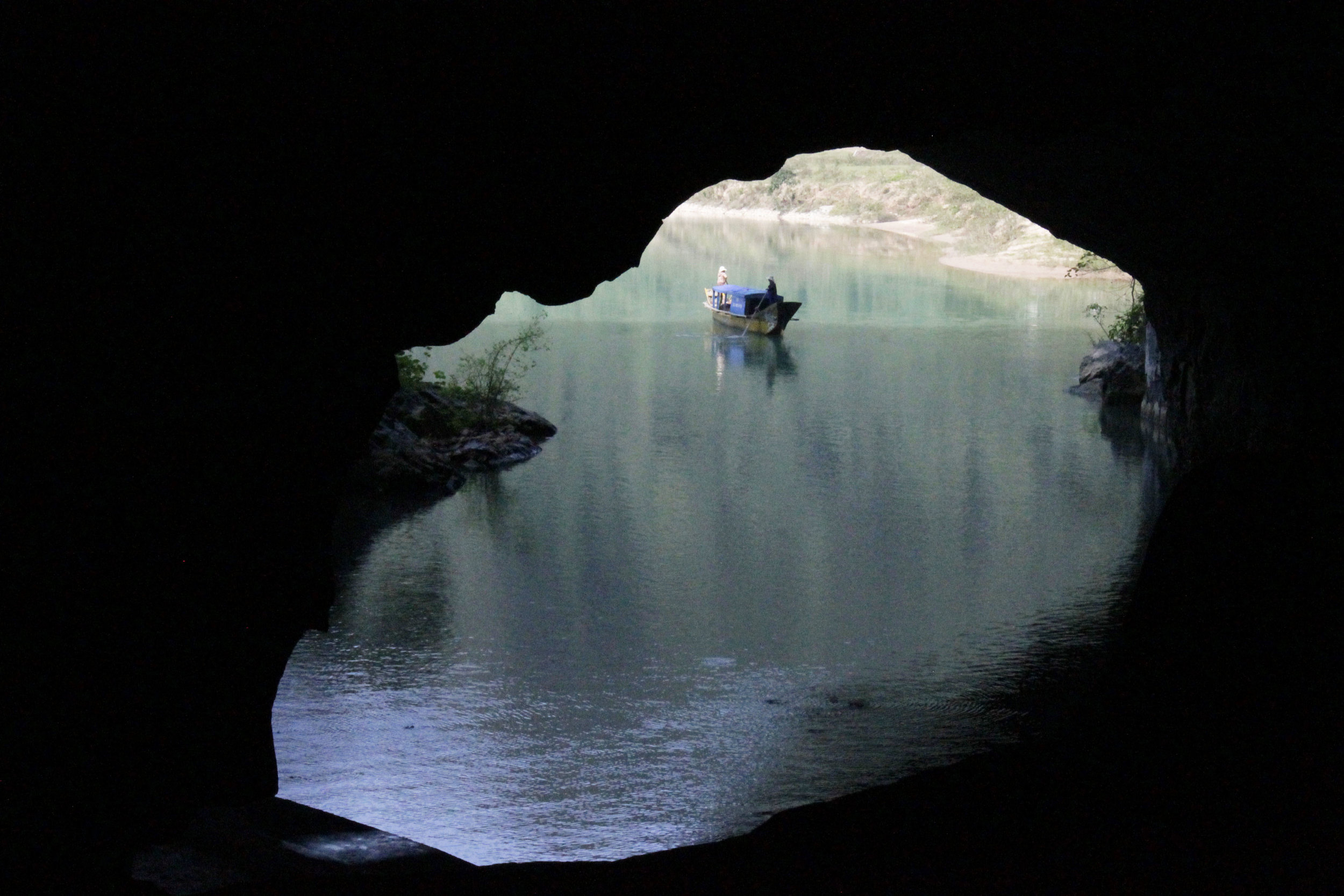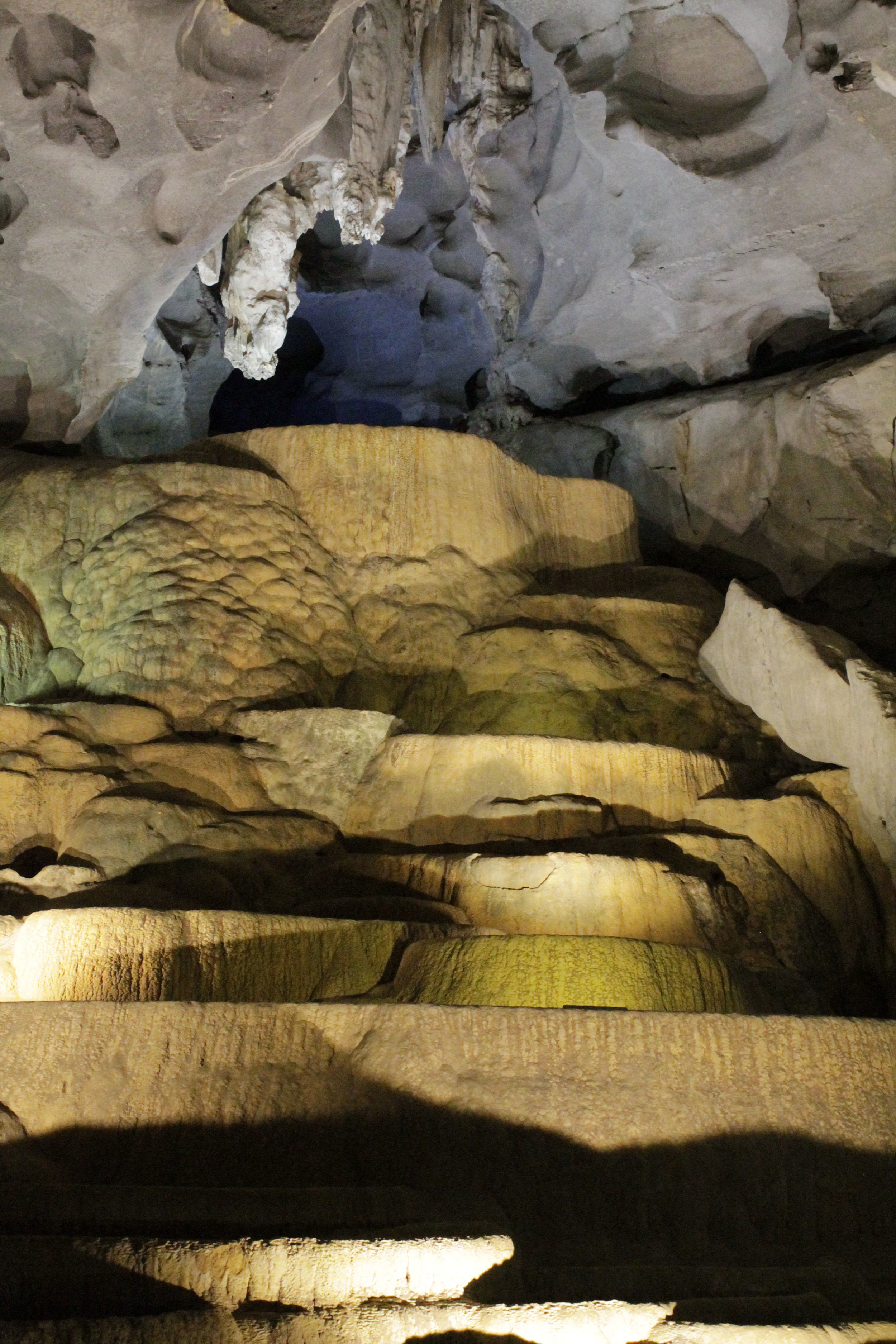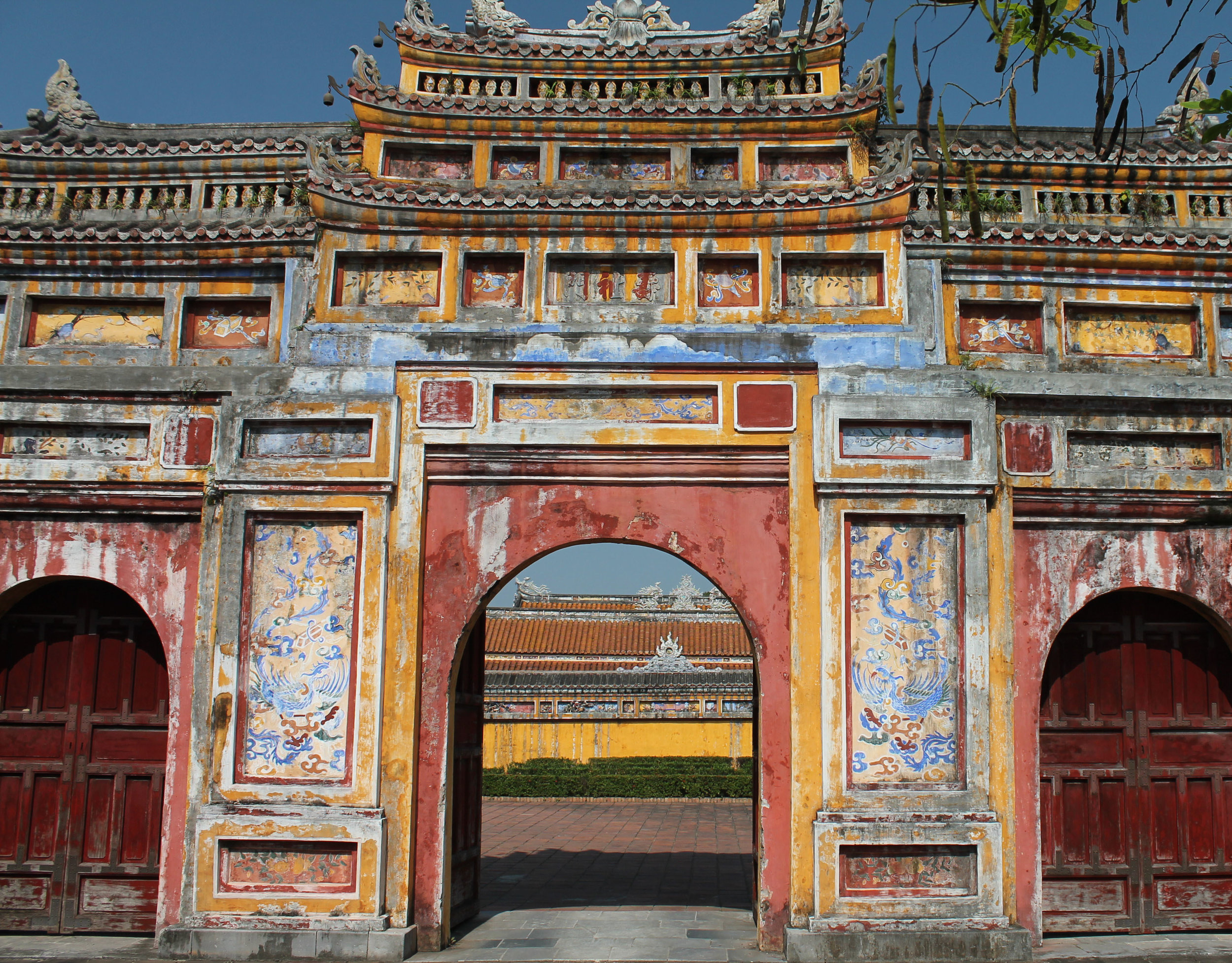Halfway through our Vietnam tour we were halfway down the country in the charming town of Hue. After Hanoi and the north we jumped aboard an overnight train and chugged south through the Vietnamese night. The train was quite comfortable, more so than European couchettes I thought. After breakfast and showers we continued south by bus. We made one foray enroute, stopping to see another of Vietnam’s many imposing caves – Phong Nha. I have been in many caves in my life, including the one on Halong Bay. Phong Nha, which means “Cave of Teeth”, is easily one of the most remarkable. What makes it unique is that you enter via boat on the river that flows from the cave mouth. Once inside the boatman shuts off the engine and you glide in silence in a surreal subterranean world. The combination of water and limestone make for eerie echoes and many of the most impressive formations are illuminated. After our drifting tour of 20-30 minutes we disembarked our boats and climbed through several caverns, emerging high above the river and entrance for fine views and a picturesque temple.
After another amazing lunch, we were back on the road and heading south with quick photo stops at Cloudy Pass and famous China Beach. In the late afternoon we arrived in Hue, the 19th century capital of the Nguyen dynasty. The big sight in Hue is the great citadel, Kinh Thanh. Equal parts military fortress, royal residence, and religious compound, the citadel is well worth a couple hours of exploration. There are moats and cannons to photograph and bastion walls and towers to climb. The Imperial Enclosure contains the palatial emperor’s residence and state buildings. There are ceremonial gates, palaces, temples, pavilions, and galleries. It is divided into concentric walled sections, the innermost being the Forbidden Purple City, where the emperor and family entertained, recreated, and housed the royal concubines. Much of the compound was destroyed or burned during the war. But the semi-destruction gives the whole place an air of mystery and one can almost sense the ghosts of the past.
Hue’s secondary sight is Thien Mu Pagoda, found just outside the city . Easily accessible by boat, that is how we traveled to see it. This temple complex is dominated by its 70+ foot high tower, Thap Phuoc Duyen. Originally founded 400 years ago, the temple became a center of political rebellion in the 1960s. In fact, one of the seminal events in Vietnamese history had its genesis here. It was a monk of Thien Mu, Thich Quang Duc, who publicly burned himself in Saigon in protest of contemporary policies. A photographer captured the incident and the image was shared across the globe on newspaper and magazine covers. The auto which transported him to his destiny can still be seen in the temple complex.
One last experience rounded out our time in Hue. From Thien Mu we took a dragon-headed river boat up the Perfume River into the Hue countryside. The area is littered with royal tombs, all of which are impressive architectural expressions. We stopped at the tomb of Minh Mang, one of the most famous. It is renowned for its peaceful, wooded setting. A great granite staircase leads to ceremonial gate through which one enters a lovely courtyard, backed by the impressive pavilion. The tomb and the pleasant river cruise seemed the perfect conclusion of our Hue activities.
Imprint Tours has a group visiting Vietnam right now with colleagues Sarah Murdoch and Trish Feaster. Follow their adventures on FB, Twitter, and/or Instagram: thetravelphile and adventureswithsarahm









